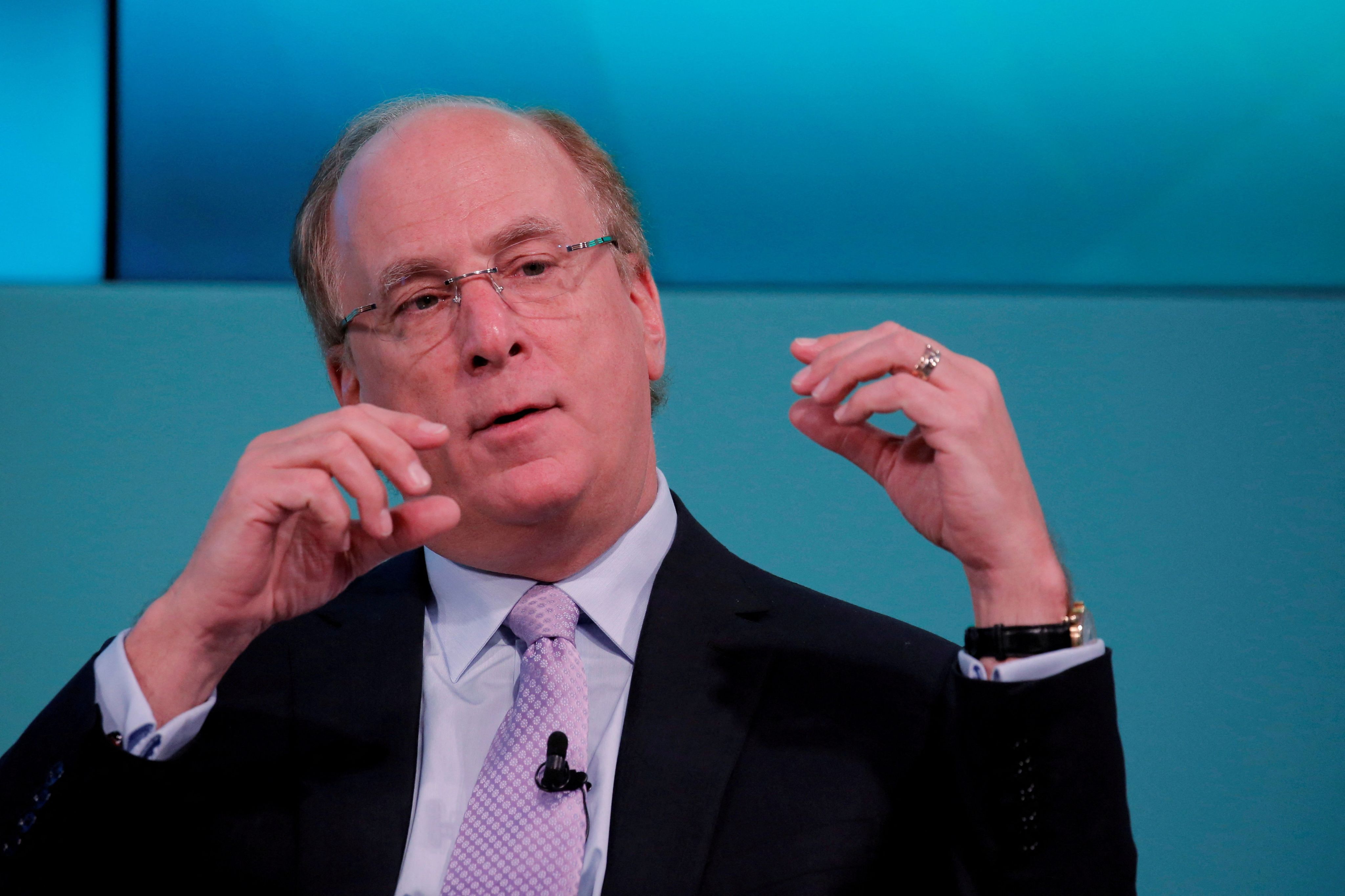Guide to responsible investing and non-workplace pensions


Responsible investing, which incorporates stewardship and environmental, social and governance investing, continues to enjoy growing popularity despite tough economic times.
It has been strengthened by the conclusion investors and pension savers have reached on the importance of weighing financial and non-financial metrics while making investment decisions.
This report, which aims to help advisers understand how ESG should guide investment strategies, is worth 60 minutes of CPD.
ima.jacksonobot@ft.com
How should responsible investing and stewardship guide investment decisions?
Investors increasingly want to know their money is being managed in a responsible way, and pension savers are no different.
Responsible investing has moved from a process of excluding companies, deemed to be causing harm, to one that looks at how ESG considerations are factored into decision-making.
A study by Nest Insight last year found that talking to savers about responsible investment helped build confidence, increased awareness that pension savings were invested, and built trust in pensions and scheme providers.
Inevitably, the more engaged the pension saver or investor, the more likely they are to enquire how the funds their monies are invested in are working to tackle societal issues or promote sustainable investment through the incorporation of ESG and stewardship principles.
The Principles of Responsible Investment, a UN-supported network of investors, defines stewardship as: "The use of influence by institutional investors to maximise overall long-term value, including the value of common economic, social and environmental assets, on which returns and clients’ and beneficiaries’ interests depend."
Stewardship and ESG incorporation, which sees investors include ESG factors in their investment and capital allocation decisions, are complementary strategies, while responsible investment involves both, each feeding back into the other.
This includes, for example, using insights garnered from engagement to enhance investment decision-making and vice versa.
Cutting corners
With this increased focus on ESG, Dominic Rowles, lead ESG analyst at Hargreaves Lansdown, says this has led some managers to cut corners and overstate the progress they have made at integrating ESG analysis into their investment processes.
But he says there are actions advisers can take to make sure the investment managers are “walking the walk, as well as talking the talk”.
“Check the fund house your fund manager works for is signed up to industry initiatives, such as the UN-backed PRI," Rowles adds.
Managers should be challenged on holding controversial positions from an ESG perspective
“When firms sign up to the PRI, they make a commitment to invest responsibly, incorporate ESG issues into their investment analysis and decision-making processes, and to develop their approach over time.
“They also report their progress to the PRI annually. Just visit the PRI website and search the name of a fund house to see if it's signed up.”
Stewardship
Along with the PRI, the UK stewardship code also outlines common expectations and best practice for investment managers when managing their client’s assets.
Kate Capocci, associate director and ESG specialist at Evelyn Partners, says when selecting funds her firm ensures, as a minimum, that all selected fund management companies are signatories to both.
In the exceedingly rare case where they are not, Evelyn Partners will find out why and then encourage them to sign up.
The UK stewardship code is a best practise for how asset managers, asset owners and service providers address all things stewardship related.
Capocci adds: “Adhering to these standards at least ensures a minimum of responsible investment practices, by committing to integrating ESG factors into investment decision-making and practising active ownership.
“Additionally, we further question the fund’s ESG integration, voting and engagements policies and processes to ensure that they are implemented systematically and productively into the investment process.”
Being a signatory to the code is meant to provide reassurance to advisers that those that have signed up are operating to, and will continue to operate to, best practice levels, not just minimum standards.
Signatories are required to provide annual submissions in order to retain their status.
The aim is to set high standards for those investing money on behalf of UK savers and investors.
Becoming a signatory is quite resource intensive, so not being a signatory does not necessarily mean a firm is not meeting the standards
As explained further by Maja Erceg, senior policy adviser – EU and government affairs at trade body Pimfa, the code comprises a set of apply and explain principles for asset managers and asset owners, and a separate set of principles for service providers.
The code does not prescribe a single approach to effective stewardship. Instead, it allows organisations to meet the expectations in a manner that is aligned with their own business model and strategy.
When applying the principles, signatories to the code should consider, among other issues, the effective application of the UK corporate governance code and other governance codes; directors’ duties; capital structure; risk; strategy and performance; diversity; remuneration and workforce interests; audit quality; environmental and social issues, including climate change; and compliance with covenants and contracts.
Some reporting expectations will be more relevant for asset managers or those investing directly, while others will be more relevant to asset owners or those using intermediaries.
Organisations must determine which reporting expectations are relevant and appropriate to their business or role in the investment community.
Gareth Trainor, head of investment solutions at Standard Life adds: “Being a signatory is quite resource-intensive, so not being a signatory does not necessarily mean a firm is not meeting the standards.
"But in assessing issues of stewardship an adviser should consider if a firm is a signatory, and if not, why not? – or indeed is it planning to become one?”
If a manager is holding themselves out to offer responsible investing then this needs to be at the very core of what they do
To ensure the principles of responsible investing and stewardship guide investment decisions and how funds are selected, Andy Miller, investment specialist at Quilter, says the principles can be integrated via a thorough fund ESG due diligence process.
This would involve assessing a manager’s level and effectiveness of ESG integration, how they are engaging with portfolio companies and how well they go about reporting on these activities.
Miller adds: “In certain instances, managers should be challenged on holding controversial positions from an ESG perspective, and understanding the rationale for holding helps to inform the effectiveness of ESG integration.
“Encouraging managers to support collaborative initiatives or become signatories to networks promoting sustainable practices is also an effective way fund investors can support the principles.”
Jack Turner, investment manager at 7IM, adds: “If a manager is holding themselves out to offer responsible investing then this needs to be at the very core of what they do.
“The fund selection should not stop at just what is in the fund but it should look at if the fund manager is walking the walk.”
Disclosure
As times goes on regulation will be the biggest driver of change.
It has already had an impact on ESG-related disclosure, which has increased significantly in recent years.
The recommendations made by the Taskforce on Climate-Related Financial Disclosures became mandatory for the UK’s largest companies in April 2022.
It requires firms to disclose their climate-related risks and opportunities in a clear and consistent way, as well as encouraging them to set out their emission reduction plans and other sustainability credentials.
The TCFD requirements are intended to help investors and businesses to better understand the financial impacts of their exposure to climate change, and price climate-related risks more accurately, while supporting the greening of the UK economy.
Focus by the regulator is having a positive impact on ESG disclosure and stewardship considerations
And then there is the sustainable finance disclosure regulation, which imposes mandatory ESG disclosure obligations for asset managers and other financial markets participants across Europe and has a wider scope than the TCFD.
Currently it does not apply to the UK, owing to Brexit, although the government is drawing up a plan to adopt similar rules.
Capocci says: “There is a fair impact in Europe under the amendments to Mifid II and the new SFDR.
“These rules are fairly prescriptive, meaning that advisers must ask certain questions related to specific regulation to determine a client’s sustainability preferences.
"This makes determining preferences under the strict criteria easier, but also may be quite restrictive.”
Verona Kenny, managing director of intermediary at 7IM, adds: “Rightly, regulation and focus by the regulator is having a positive impact on ESG disclosure and stewardship considerations.
"We look forward to the day when the term ‘greenwashing’ is a thing of the past."



How to embed ESG considerations to ensure stewardship approach is maintained
Stewardship is an investment process that is really focused on long-term value drivers and continuous engagement between client, adviser, fund manager and investee company.
Back in June a report by a steering group set up by the Investment Association and trade body PLSA made recommendations to strengthen the relationship between pension funds and investment managers, who together are responsible for £4tn of institutional assets and provide income in retirement to millions of people in the UK.
The report, which also included investment managers, pension funds, investment consultants and lawyers, sought to tackle issues such as a lack of clarity on stewardship expectations; an overemphasis on short-term performance; and not taking enough account of the stewardship outcomes, which risk undermining longer-term sustainable growth.
The report said: "Stewardship is essential for getting better returns for the millions of people in the UK saving for their retirement, but getting good stewardship to work consistently needs clarity and alignment between asset owners and investment managers."
Another recommendation was the setting up of a "governing charter", setting out mutual expectations on the promotion of long-term sustainable value.
This charter would cover mutual expectations on the promotion of long-term, sustainable value through:
- The expected minimum duration of the relationship.
- Performance reviews.
- Ongoing dialogue, communication and disclosures, including how to facilitate client voice.
- Responsibilities to the market and management of systemic risks.
- Culture and governance.
- Ongoing alignment of stewardship policies
Adviser role
When it comes to embedding ESG considerations within client fact-finds and annual reviews – for example to ensure the ongoing approach to stewardship is maintained – although there is no specific regulatory guidance on capturing client ESG considerations, the regulator makes it clear it expects advisers to discuss this area with clients.
For example, in Discussion Paper DP21/4, the FCA states that: “Advisers should consider sustainability matters in their investment advice and ensure their advice is suitable.”
A client should be reminded that oil and gas forms a large proportion of the UK stock market, and that removing it will mean their portfolio will perform differently to the wider stock market
Based on other regulatory guidance around collecting suitability information about clients, Andy Miller, investment specialist at Quilter, says the firm has five “golden rules” that advisers should adhere to when discussing this area:
- Ask a meaningful but manageable number of questions.
- Avoid binary questions – you are trying to assess the extent to which a client wants ESG to affect their investment selection, which is not a simple 'yes' or 'no'.
- Ensure questions are clear and easily understood.
- Avoid biased, leading or misleading questions.
- Avoid skewed results with bundled questions, or inappropriate weightings towards certain outcomes.
Dominic Rowles, lead ESG analyst at Hargreaves Lansdown, says when asking clients about their ESG preferences, it is important that advisers dig into the detail to understand which areas their clients want to avoid, and which sustainable themes they want to access through their investments.
Education around ESG is essential as the more clients understand, the more their expectations are to be met
They should also be clear on the implications the client’s desired approach could have for performance.
“For example, if a client wants to avoid investing in oil and gas companies, they should be reminded that oil and gas forms a large proportion of the UK stock market, and that removing it from consideration will mean that their portfolio will perform differently to the wider stock market,” Rowles notes.
“The portfolio should also be reviewed on an ongoing basis to ensure it continues to meet investors’ preferences.”
Communication skills is key
Catriona McInally, business development manager at M&G Wealth, says advisers need to think carefully before asking a client a question that leads to an answer that makes investing very difficult.
She adds: “Education around ESG is essential as the more clients understand, [the more] their expectations are to be met.
“At annual reviews, advisers need to be prepared to not only discuss financial performance but how the funds have done against their ESG metrics.
"Has the fund done what it set out to do? For example if the stated objective was to reduce CO2 emissions by X per cent, has it done this?”
Verona Kenny, managing director of intermediary at 7IM, adds: “To move [from] the view that ESG investing is simply a fad [and instead] to a way of investing, will require advisers talking through and embedding ESG considerations into a client’s long-term plans, and not simply focusing on short-term investments.”
To ensure the portfolios continually meet the client’s needs within the context of stewardship, Andy Miller, investment specialist at Quilter, says information should be sought and delivered from investment managers to advisers and clients to demonstrate how investments are performing from an ESG perspective.
This information may include areas like carbon emissions, exclusions – areas that will not be invested in/normally avoided – or alignment to UN sustainable development goals.
Evidencing a client's preference
Evidencing how an adviser determined a client’s preference for ESG can be explored in the client's fact-find process.
McInally says asking a client about their investment preferences is good practice and will allow an adviser to take these preferences into consideration when meeting the financial objective of the client.
She adds: “There are a number of ways in which an adviser can gather this data, such as specific questionnaires, down to capturing the clients’ thoughts and views freeform.”
ESG investing is rising up the regulatory agenda and, at the same time, clients are increasingly demanding a service that meets their changing needs.
Advisers should be increasingly aware of the need to demonstrate ESG knowledge to clients
They may wish their portfolios to reflect their considerations on themes such as climate change, social justice or boardroom pay, for example.
As a result, advisers may wish to consider reviewing their overall business, practices and processes, and think about how to include ESG suitability processes and ESG products in their offering, says Maria Nazarova-Doyle, head of pension investments and responsible investments at Scottish Widows.
Nazarova-Doyle adds: “With the direction of travel clearly signposted by the government and regulators, we believe advisers should be increasingly aware of the need to demonstrate ESG knowledge to clients.
"They may wish to get ahead of the regulatory curve so they can meet clients’ expectations, and not risk losing out to better-informed competition."
Client needs
Understanding the important ESG issues, as well as key facts and figures to back-up knowledge, could prove invaluable, and training may be important for staff less familiar with ESG investing.
Recognising the needs of clients is also of key importance.
Some clients may already know exactly what they want in terms of ESG investing or have a clear idea of what they do not want to invest in or where they want to make a positive impact with their investments.
But others may require more hand-holding.
Service that stands out is likely to come from advisers who have looked in detail at ESG issues
Nazarova-Doyle says exploring the topics with clients helps ascertain potential demand and supports seeking appropriate fund solutions.
She says: “Service that stands out is likely to come from advisers who have looked in detail at ESG issues, ESG products and their clients’ ESG-related requirements, as well the regulatory proposals already on the table. In addition, they will be ready to adapt and change as the investment and regulatory landscape evolves."
Nazarova-Doyle adds: “Ultimately, we believe that having a better understanding of a client’s ESG preferences not only provides an opportunity to enhance an adviser’s business relationship with existing clients but could also be of benefit in attracting new business.
“Quality client interactions with investment recommendations that could better meet clients’ expectations and requirements are at the heart of this, so it’s best to be prepared.”




How do active and passive managers use stewardship effectively?
It is relatively straightforward for active fund managers to integrate ESG considerations into investment decisions, given they are responsible for selecting the stocks a fund invests in.
However, responsible investment practices can also be applied to passive funds in several ways.
For a long time, sustainable investing was really only the domain for active equity funds.
However, more recently, passive funds tracking indices that incorporate ESG screens and tilts have become much more popular.
These can provide low-cost access to markets while tilting towards those companies that perform the best in terms of ESG concerns.
ESG and passive investing
Maria Nazarova-Doyle, head of pension investments and responsible investments at Scottish Widows, says stocks can be excluded on ESG grounds from the benchmark index a fund tracks.
Explaining further, she adds: “For example, to apply our exclusions policy to our mandated passive equity funds, we worked with FTSE Russell on new custom screened indices that they now track.
“This removes companies involved in thermal coal and tar sands, manufacturers of controversial weapons, tobacco producers and UN global compact violators.
“Our corporate bond tracker fund now tracks an ESG bond index from iBoxx to improve the overall ESG profile of the fund and reduce its carbon footprint. Not only does the index exclude companies involved in controversial activities, it also screens out those with low MSCI ESG Ratings.”
Active stewardship can positively impact the stocks that active funds invest in and which feature in indices that passive funds track
Funds can track an index that is tilted towards companies with strong ESG credentials, such as those making good progress in reducing their carbon emissions.
There are also more sophisticated versions of this that could be described as quasi-active.
Scottish Widows has a range of multi-asset funds that invest in a climate transition fund developed with BlackRock, which focuses on businesses that are decreasing carbon emissions, more effectively managing water and waste, and developing clean energy technology.
Andy Miller, investment specialist at Quilter, says it is reasonably straightforward to create a passive instrument that tracks an ESG index, and indeed to create a portfolio of such passive funds in order to build a fairly well-diversified portfolio.
Positive engagement
ESG indexes can create screens to reduce areas such as ESG risk and carbon emissions compared to a non-ESG index.
However, if an investor is seeking funds that exhibit positive engagement strategies or align to areas like the UN SDGs, they are typically better to do this via an active fund.
That is because this is an area that is fundamentally hard to track as it is not based on numerical rules, Miller says.
Although effective engagement is more difficult to evidence in passive strategies, it is possible where a manager has a sophisticated firm-wide engagement framework.
In these instances, managers may be engaging on thematic priorities with companies held both passively and actively.
By conducting firm-wide engagements, the combined passive and active ownership gives managers a greater voice and greater leverage to instigate change.
[Exerting influence at a board level] is much harder in the passive space
The consideration of ESG risk in equity and corporate credit is now increasingly viewed as a form of fundamental analysis in active management.
Ultimately this results in active managers having a better understanding of the risks and opportunities a company faces both operationally and externally.
Explaining how the approach between active and passive managers towards stewardship can differ, Jack Turner, investment manager at 7IM, says the portfolios of active equity managers are normally quite concentrated and so they can tailor each engagement for specific company issues.
Passive managers on the other hand have many more holdings and therefore have to take a centralised approach based on high level engagement themes, which they can then apply to many companies.
Turner adds: “This can be very effective for large managers when they use the full weight of their AUM to vote on matters that are related to their core engagement themes.”
Pushing for change
As ESG and stewardship are common-place within active funds, fund managers can actively engage with the companies they invest into and often, as major shareholders, push for change.
Catriona McInally, business development manager at M&G Wealth, says by being an active shareholder managers can influence at a board level to perhaps improve governance, policies and practices.
She adds: “This is much harder in the passive space. Passive funds tend to use smart beta to perhaps a higher weighting to companies who score higher on an ESG matrix than others or they may just exclude certain sectors altogether.”
Nazarova-Doyle adds: “Active stewardship – challenging companies to adapt their businesses to be more sustainable and responsible – also plays a vital role and can positively impact the stocks that active funds invest in and which feature in indices that passive funds track.”
Active managers generally build strong relationships with the companies they invest in, utilising that to bring about change and inform their voting decisions
Dominic Rowles, lead ESG analyst at Hargreaves Lansdown, agrees that voting and engagement are key elements of stewardship for both active and passive investment managers, as active managers generally have a deep knowledge about each of the companies that feature in their portfolio.
He adds: “They generally build strong relationships with the companies they invest in, utilising that to bring about change and inform their voting decisions. Passive funds often invest in hundreds, or even thousands, or companies, so the voting and engagement effort often falls to a large stewardship team.
“That team may focus its engagements around certain themes, for example, they might choose to engage with companies they believe are key in the fight against climate change.”



What bearing does responsible investing have over the performance of funds?
In his 2022 annual letter to chief executives back in February, Larry Fink, chairman and chief executive of BlackRock, said: “Our conviction at BlackRock is that companies perform better when they are deliberate about their role in society and act in the interests of their employees, customers, communities, and their shareholders.”
"I believe the de-carbonising of the global economy is going to create the greatest investment opportunity of our lifetime.”
This is an interesting comment, considering that a common argument against investing in assets with ESG criteria has been that they often do not achieve the same high returns as the stocks without this focus.
According to Maria Nazarova-Doyle, head of pension investments and responsible investments at Scottish Widows, a slew of research has proved that not to be the case.
For example, numerous academic and investor studies in recent years have found historically lower risk and outperformance over the medium to long term for portfolios that integrated key ESG factors alongside rigorous financial analysis.
She points to one study on ESG and financial performance by the NYU Stern Center for Sustainable Business, which aggregated evidence from more than 1,000 studies published between 2015 and 2020.
ESG performance
Some of the research’s key findings included that ESG investing provides downside protection, especially during a social or economic crisis.
Additionally, sustainability initiatives at corporations drive better financial performance due to mediating factors such as improved risk management and more innovation, and studies indicate that managing for a low-carbon future improves financial performance.
Nazarova-Doyle says: “There has been strong evidence of outperformance in the recent past. During the market turmoil triggered by the Covid-19 outbreak, for example, Morningstar showed that its ESG-screened indices largely outperformed in 2020 and over the previous five years, while also offering more downside protection.
“While we have seen somewhat of a reversal due to the current energy crisis, we believe this is temporary as the long-term trend on ESG, and de-carbonisation in particular, is evident.”
Kate Capocci, associate director and ESG specialist at Evelyn Partners, says responsible investing improves long-term performance as it takes a wider look at all the risks/opportunities affecting a company.
Additionally, companies with more responsible business practices tend to have good governance and risk controls, stronger balance sheets and are more prepared for the future.
The de-carbonising of the global economy is going to create the greatest investment opportunity of our lifetime
Meanwhile, Andy Miller, investment specialist at Quilter, says there is a school of thought that states that the inclusion of ESG principles, and management of ESG risk, should positively influence the long-term investment of funds.
So this could be good news for a pension saver, who is years away from pulling out money from their savings pot.
However, over the short term it is possible that the limitation of investment areas – for example due to exclusions – could negatively impact a portfolio’s performance.
This can be evidenced by the performance of traditional fossil fuels over 2022, which is an area that has higher ESG risk, Miller notes.
But given the sustainable fund universe is often defined by sustainable themes, Miller says he should expect sustainable thematic funds to outperform the broader market when certain themes experience tailwinds in both the short and long term.
He adds: “We saw the outperformance of renewables in 2020 as a relatively short-term event, however, these themes are often underpinned by long-term secular trends, which are expected to be key drivers of growth over the long-term.”
Risk perspective
Miller says it is also important to understand the difference between ESG risk management from a fund manager’s perspective and the ethical principles of a specific investor.
“The former is a means of managing risk/returns against an ESG framework.
“The latter is gaining an understanding of areas an individual may wish to avoid investing in based on their personal views, or conversely, areas they prefer as they see them as more sustainable," says Miller.
“To fully understand this, you would have to discuss the views of that particular client and understand how it would affect investment selection. A fund manager is not well placed to do this, a financial adviser is.”
According to Jack Turner, investment manager at 7IM, the type of responsible investing mandate that a fund follows can have a significant impact on performance over all time periods.
The constraints put on a manager’s investable universe based on either negative or positive screens will lead to sector or factor differences.
Lots of areas where exclusion-based funds can’t invest tend to be the ones that make money whatever shape the economy is in.
Turner says: “The past 12 months has made that even more apparent; most mandates exclude oil and gas companies, which have had very strong performance as the oil price surged from $60 to $120 a barrel.
“Many funds benchmarked to the FTSE All Share have suffered on that basis. However, despite this the long-term investment case for underweighting oil and gas companies remains.
“These companies are likely to suffer from climate transition risk in the form of higher taxation and regulation, which will impact returns in the future.”
Understanding the variables
So how a responsible investment fund performs clearly depends on lots of factors, including the manager’s investment process.
Many have the potential to perform well over the long term, but their performance will differ to that of more conventional funds over shorter time periods.
Dominic Rowles, lead ESG analyst at Hargreaves Lansdown, says cutting out certain industries completely could be one way to make sure an investment portfolio is aligned with a client’s morals, but it will affect performance.
For instance, if you invest in a fund without exposure to the oil and gas industry, it will do well compared to unrestricted funds when the industry is out of favour, but it will not do so well if the industry recovers, he explains.
ESG-screened indices largely outperformed in 2020 and over the previous five years, while also offering more downside protection
Rowles adds: "Lots of the areas where exclusion-based funds can’t invest, like tobacco and some healthcare businesses, tend to be the ones that make money whatever shape the economy is in."
It means responsible investment funds tend to invest more in cyclical businesses, like those in the technology or financial sectors, whose share performance tends to more closely mirror the health of the economy. Profits and dividends rise during the good times but suffer during slumps.
Responsible investment funds also tend to invest more in small and medium-sized businesses than other funds, Rowles adds.
That is because many large businesses operate in areas these funds cannot invest in, like oil and gas. Smaller companies have excellent long-term growth potential, but they can be more volatile than larger ones, which makes them higher-risk.
Sectors like oil and gas and tobacco also tend to pay some of the highest dividends available across the stock market.
Rowles says cutting these companies out means responsible income funds tend to pay out income less than traditional income funds.

BlackRock chief executive Larry Fink. (Reuters/Lucas Jackson)
BlackRock chief executive Larry Fink. (Reuters/Lucas Jackson)




